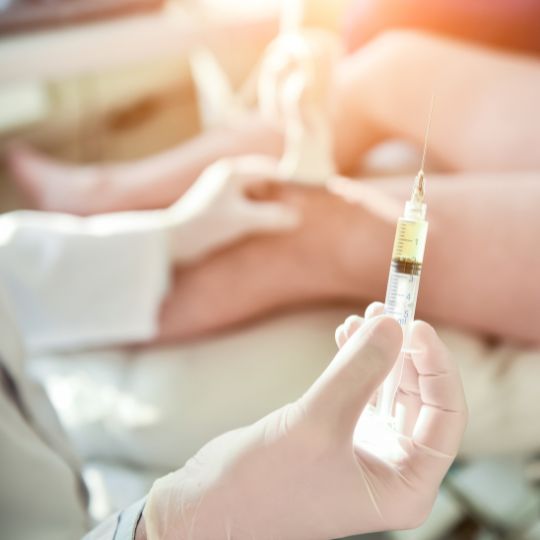Plasma Rich Platelet Injections (PRP) is a somewhat controversial topic due to the contradictory evidence surrounding it’s effectiveness. Since dancers are always exploring conservative forms of care to avoid surgery, I want to cover when it might be used and how effective it may be based on the research.
What is PRP?
Our body is filled with about 5 liters of blood on average. Most of our blood is composed of plasma – a combination of red blood cells, white blood cells, and platelets. Platelets are a rich source of Growth Factor. Growth Factor helps promote wound healing, such as tears and ruptures.
In the simplest sense, PRP is the process of creating a solution of plasma that has a much larger concentration of platelets than normal then injecting it into the area of injury to help the injured tissue heal faster. There are several sources and medical organizations online where you can read about it in more detail.
How is PRP created?
Simply put, your blood is drawn and placed in a centrifuge to spin the blood to separate the various materials into layers; red blood cells, white blood cells, and platelets. The layers are then placed in a solution to create a concentration of platelets that are 2-8 times higher than what’s found in the body. The solution is injected into the area of injury to promote healing at an accelerated rate. Depending on the type of injury, there may be more steps or variations of solutions necessary.
What is PRP used for?
PRP injections have actually been used for a large variety of injuries and purposes. As injuries go, tendon and muscle tears/ruptures are most common.
- Rotator cuff injuries of the shoulder
- ACL tears
- Achilles tendon ruptures
- Hip and shoulder labral tears
There is even evidence that PRP injections can help with arthritis. Because platelets are so rich in Growth Factors, PRP injections have also been used to enhance cosmetic procedures and promote hair growth.
What does the research say?
At it’s core, PRP injections are a concentrate of materials from your own body injected back in to amplify your natural healing process. The benefit is there isn’t a risk for rejection because the procedure uses your own blood.
In one of the largest studies conducted on the effectiveness of PRP, 230 patients with “tennis elbow” were treated with either PRP or traditional care. The study reports that after 24 weeks, about 84% of the patients treated with PRP reported that they felt 25% or greater relief of their pain. This is compared to the patients who were treated with traditional care where only 68% reported the same levels of pain relief.
On the other hand, one systematic review composed of 6 studies, three of which were considered high quality studies and three of which were considered low, found that PRP therapy for “tennis elbow” found no measurable difference in pain relief between patients treated with PRP and those treated traditionally.
To make things even more confusing, other studies have found that while some patients respond very well to PRP, other patients with the same conditions do not. So what does this all mean? Overall, there just isn’t enough evidence right now to validate or discredit PRP as a viable form of care. As time goes on, more comprehensive research will be available to better understand whether PRP works and under what circumstances.
In conclusion
So what’s the take away? Treatment for serious and potentially career altering injuries is never black and white. There is no one answer that applies to every dancer or athlete. You need to look at your injury and situation and have a discussion with your healthcare provider on what the best road to recovery is. For some it may be surgery, for others it may be conservative care, including Plasma Rich Platelet Injections. For dancers specifically, it’s equally important that we give ourselves the best shot at a long and healthy career.
Keep in mind that PRP therapy is not covered by most medical insurances. On average, the out of pocket cost for PRP is between $500 and $2,000. Even under the best circumstances, PRP is not meant to serve as your soul form of care but rather a compliment to rehab and conditioning.





